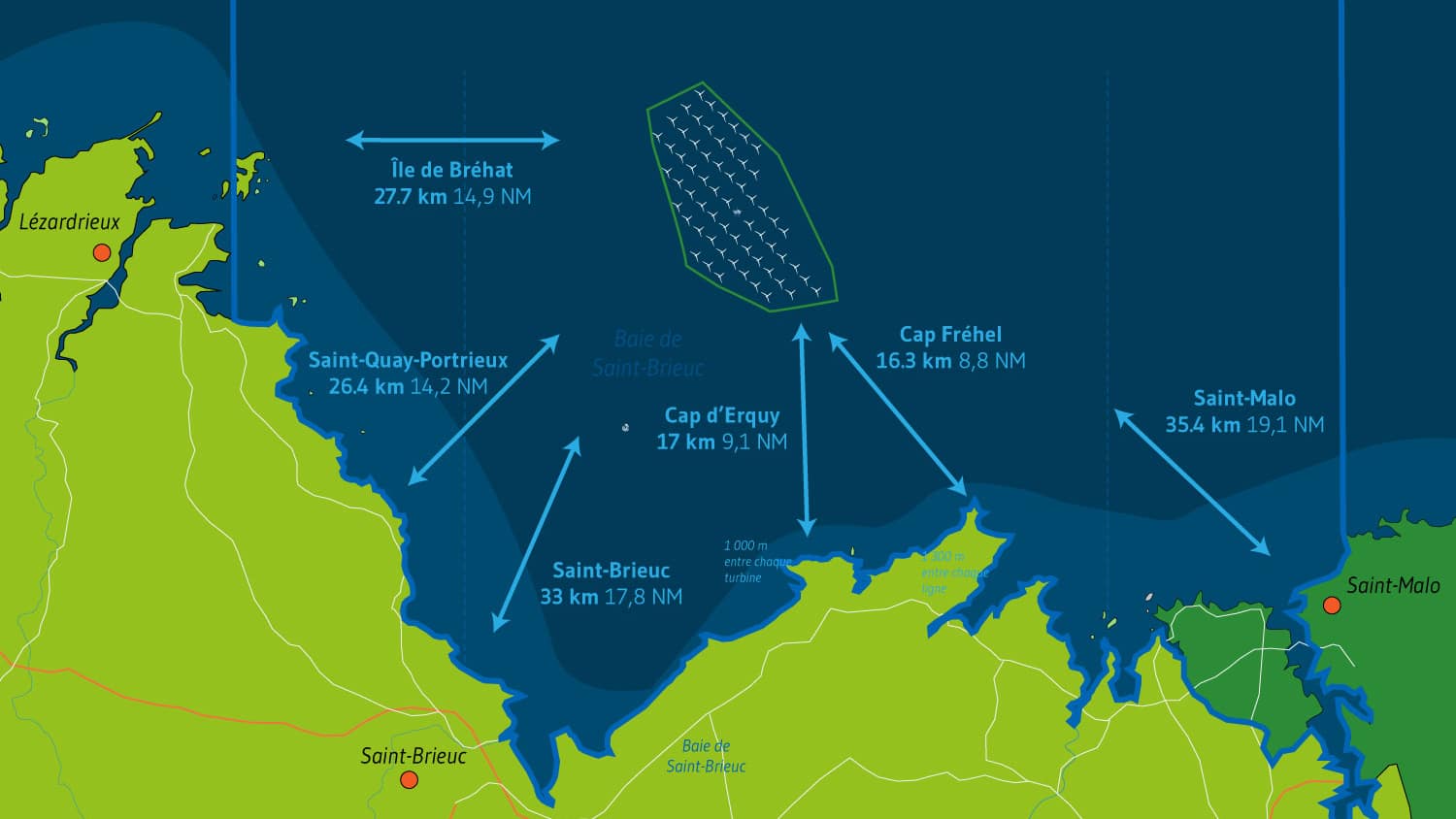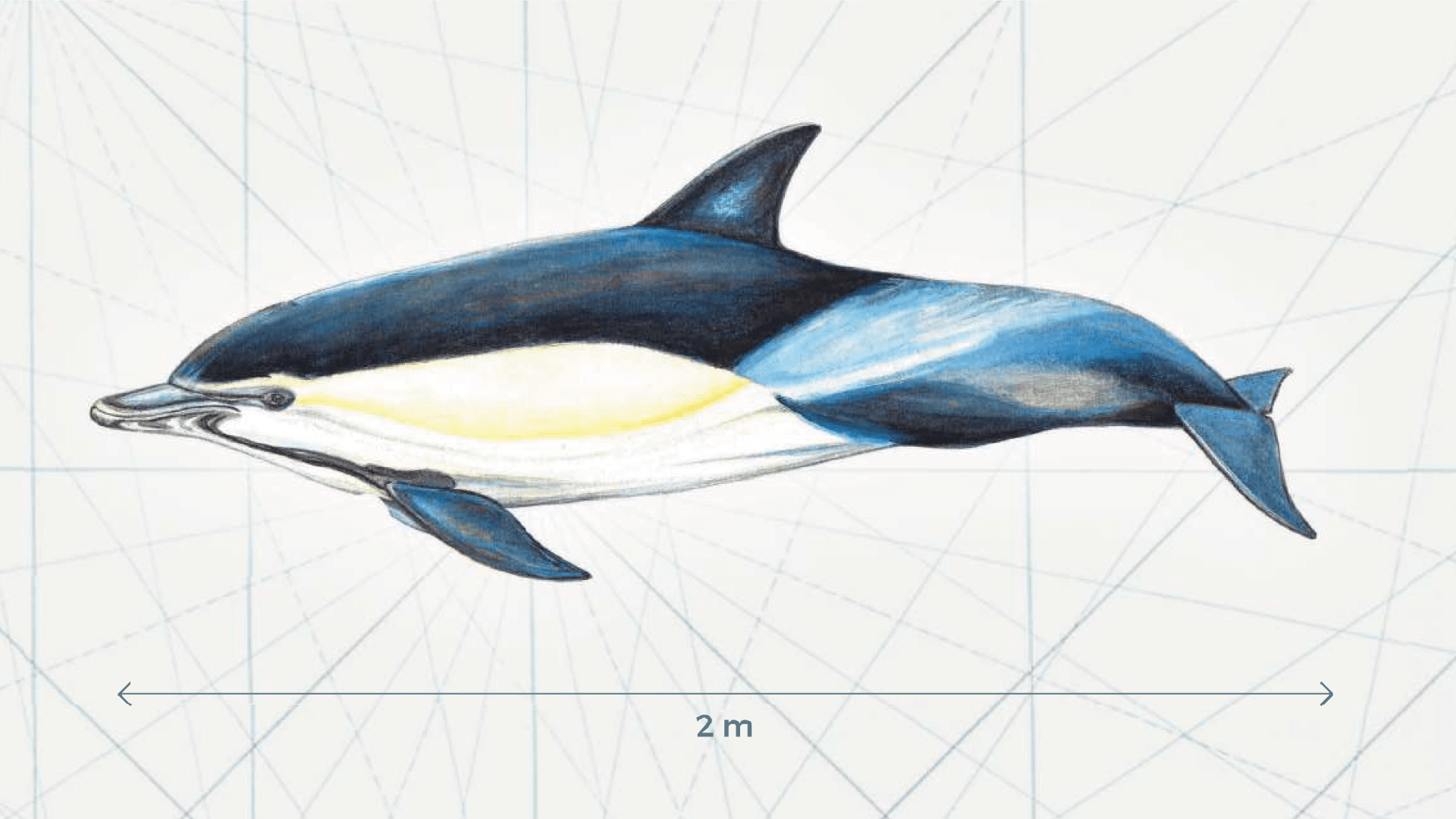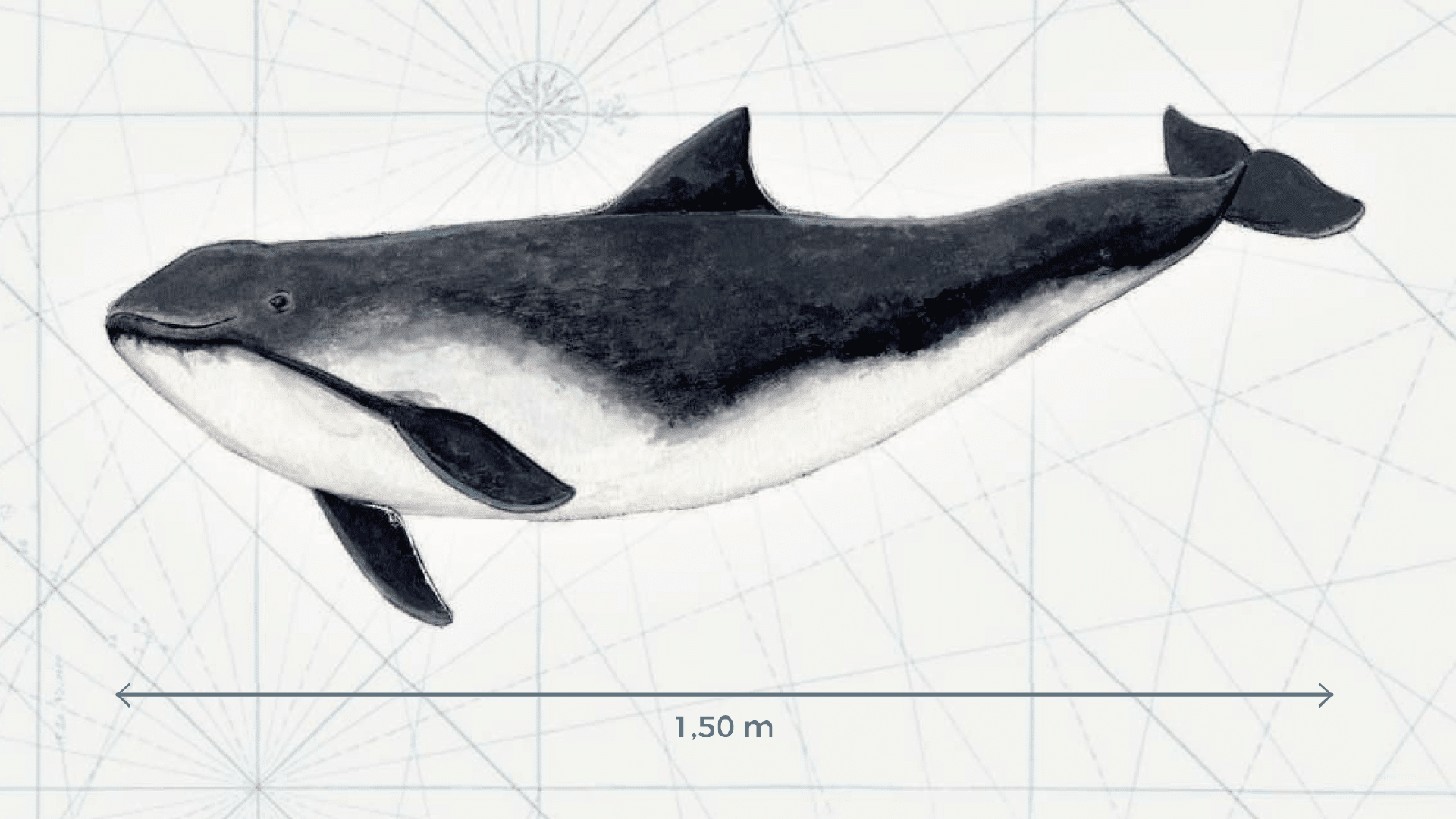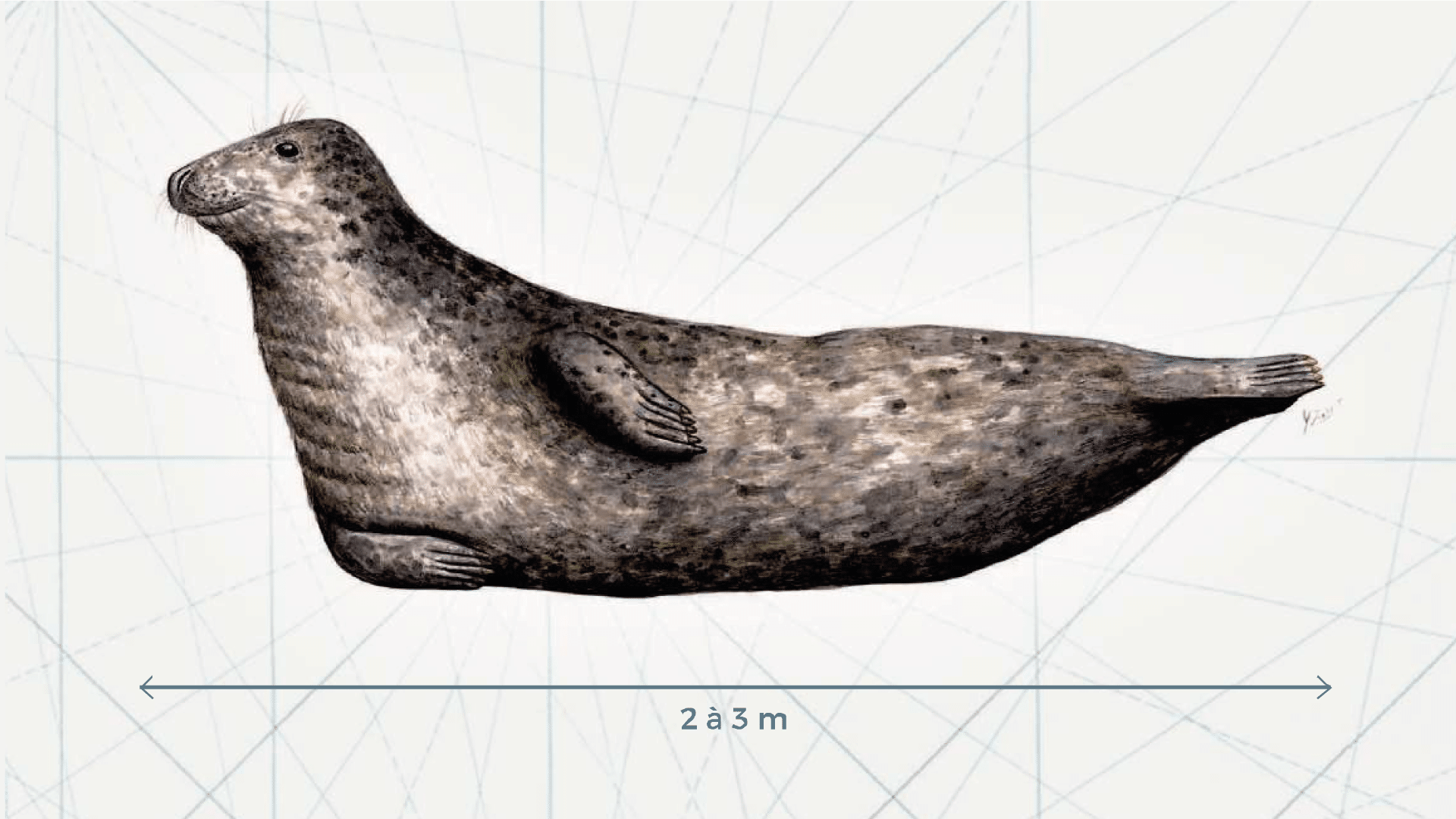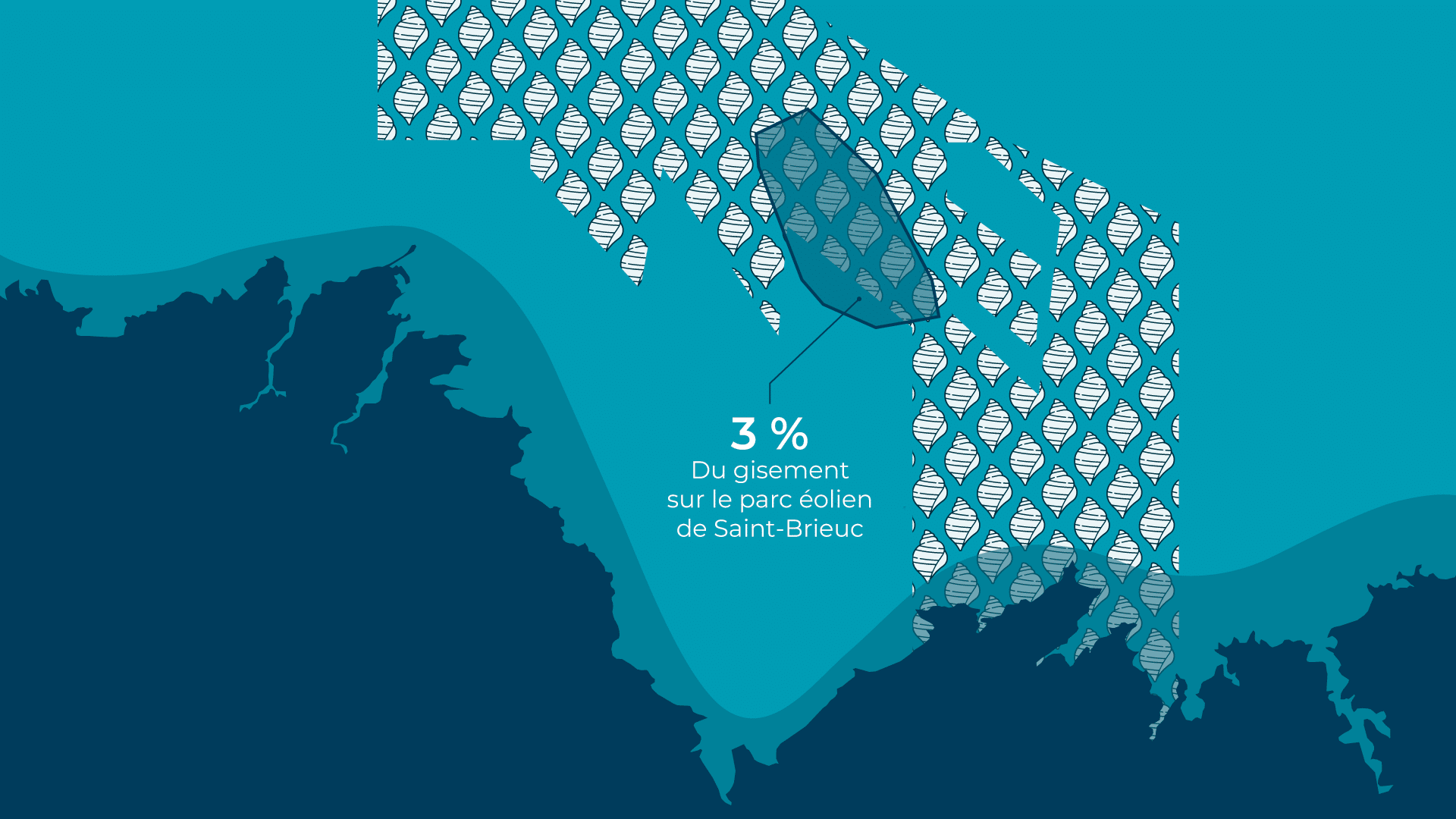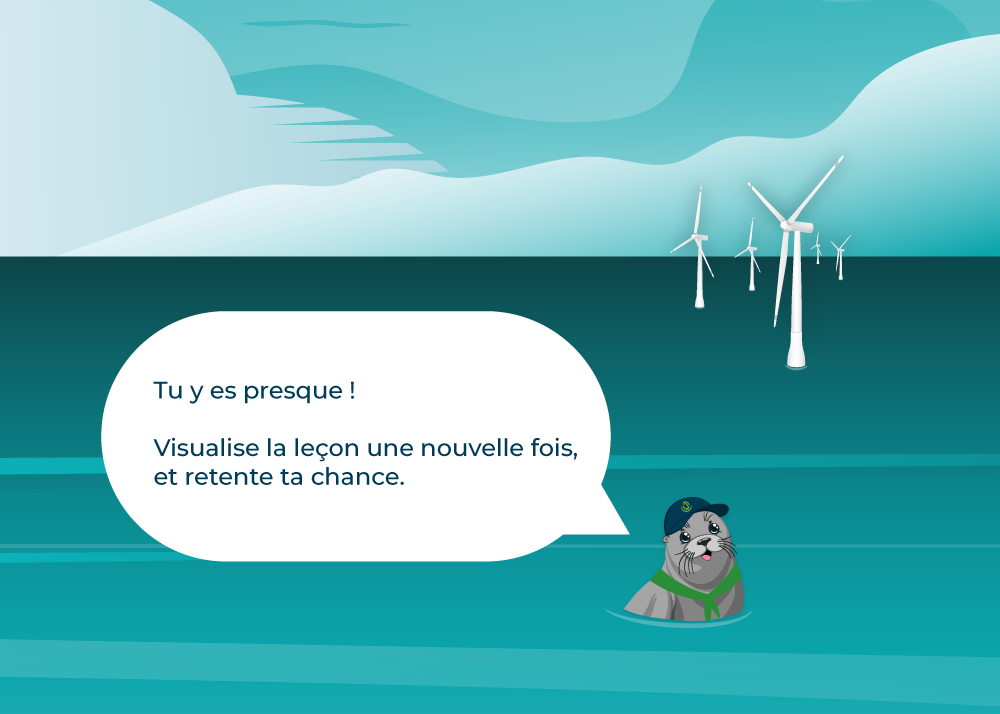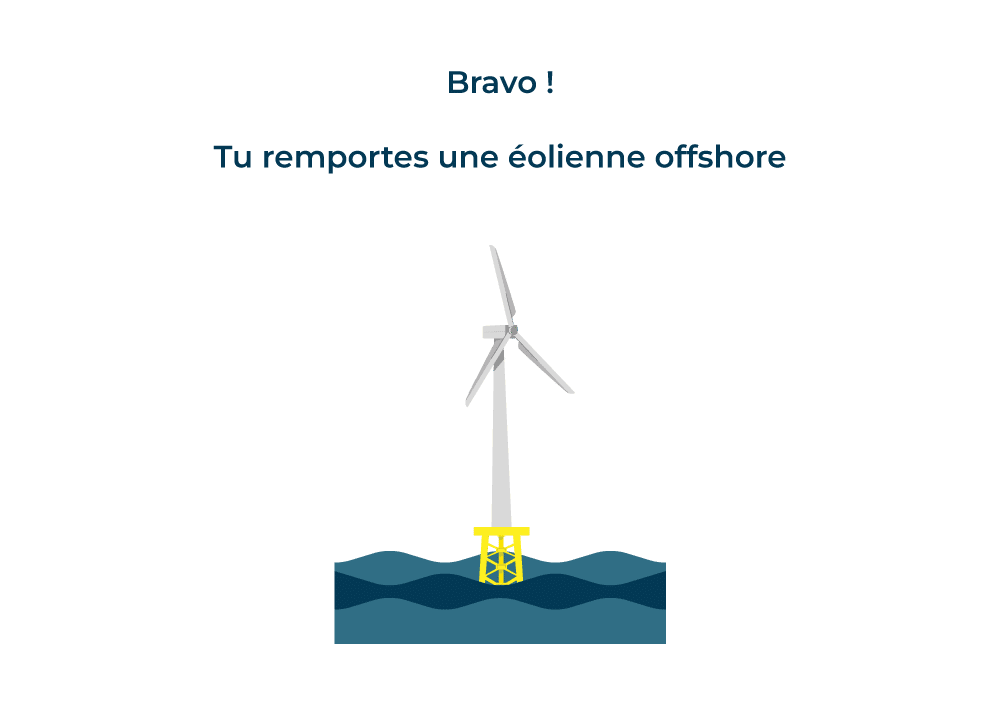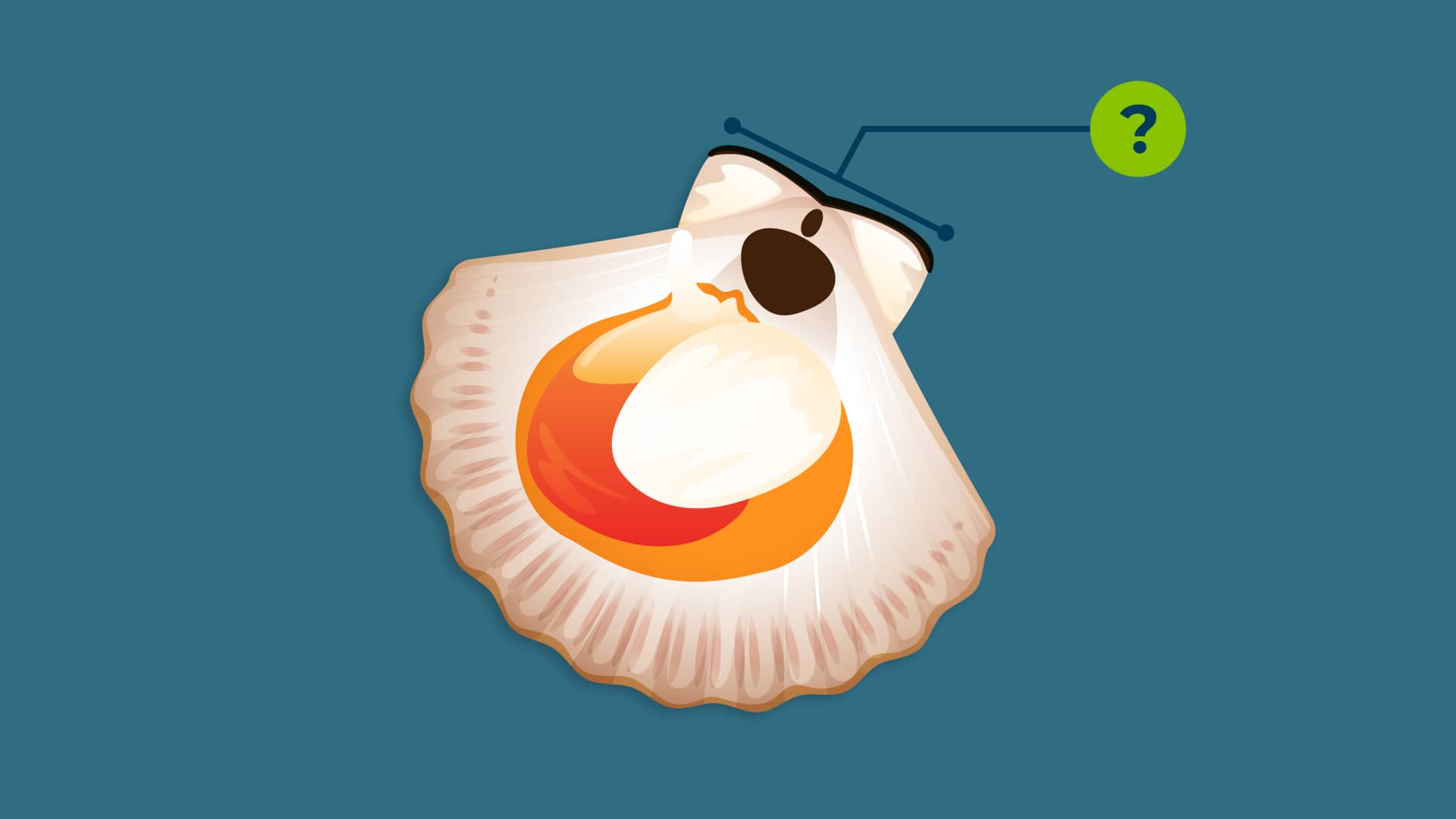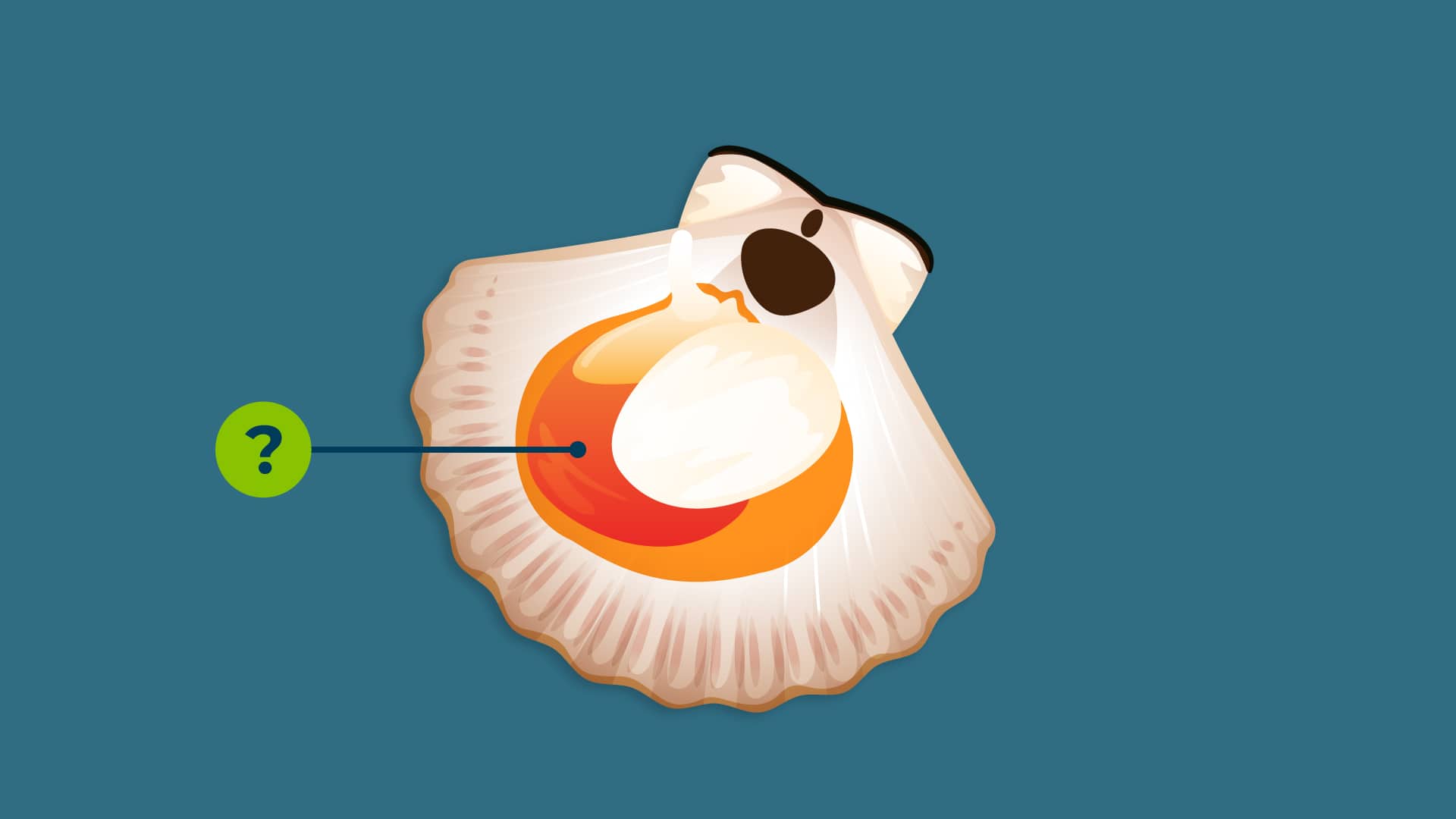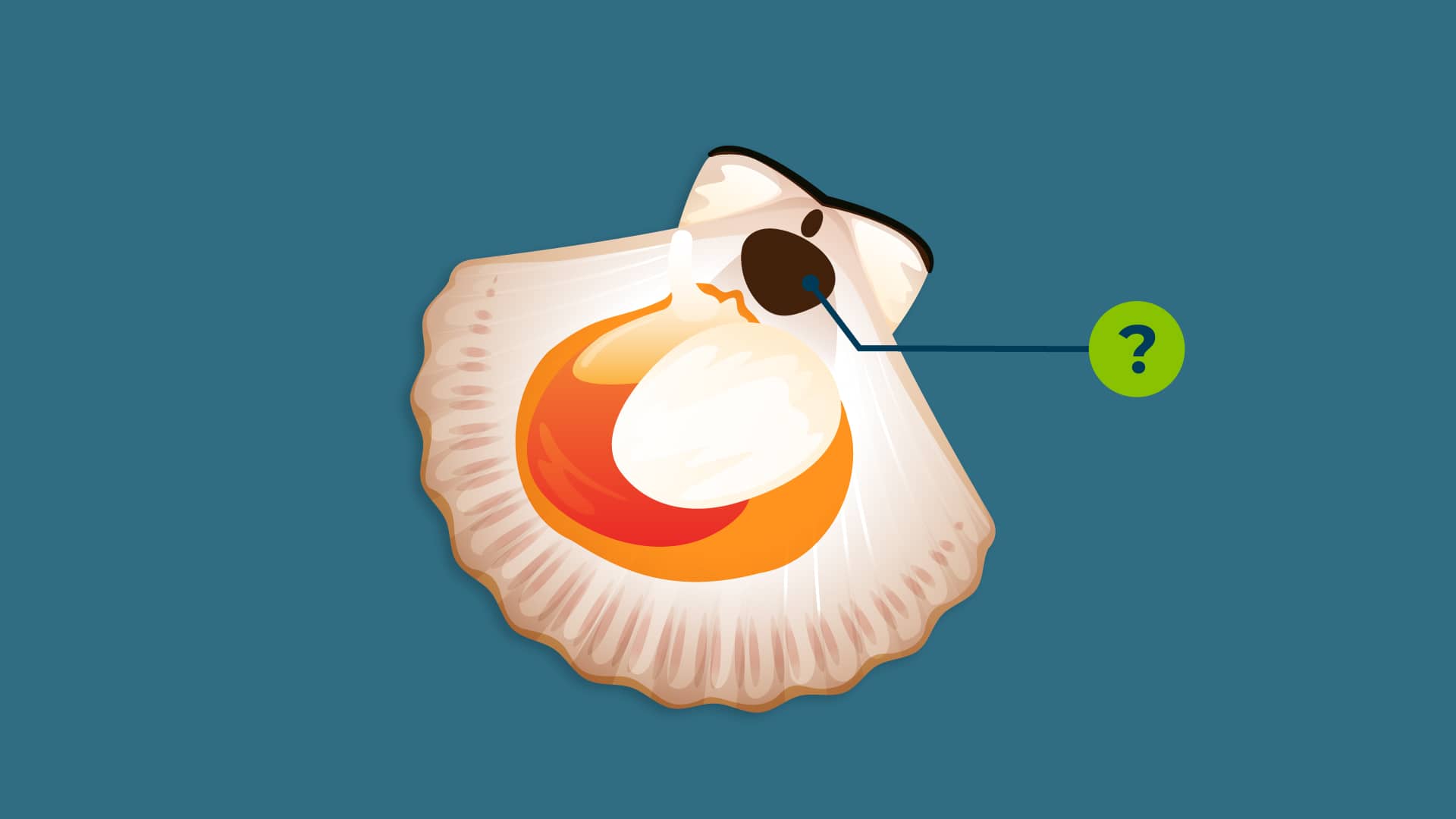The marine environment
and the offshore wind farm
The offshore wind farm in the bay of Saint-Brieuc
You now know how an offshore wind farm works as well as the different stages of its construction and commissioning.
The Saint-Brieuc offshore wind farm is integrated off the coast of the bay of Saint-Brieuc, in Brittany, in the Côtes-d'Armor department. The closest wind turbine to the coast will be located 16.3 km away.
The Ailes Marines project teams have developed a wind farm that respects the environment. Teams of experts in the field have been put in place, they know all these subjects like the back of their hand! They work daily on the project so that it can meet environmental standards.
What are the Ailes Marines teams implementing?
It is important that the offshore wind farm project respects the environment around it . This is Ailes teams work with administrations to implement specific monitoring and measures as part of the project.
Monitoring of marine animals and mammals
In the area of the Saint-Brieuc offshore wind farm, various marine mammals live. Among these marine mammals, we find 2 large groups: Cetaceans , such as dolphins, porpoises or even whales, and Pinnipeds , such as seals.
The particularity of these mammals is that they live mainly in the sea. They swim like fish but do not breathe like them! They have to come to the surface to be able to breathe.
Why should we protect them and avoid interfering with them?
Marine mammals are wild animals. Their life is punctuated by important events: sleep, moulting, maintenance of the coat, birth, breastfeeding of the young, etc.
Approaching them could scare them away and therefore disrupt their life cycle. You wouldn't want to be woken up in the middle of your sleep, would you?
Preserving biodiversity is important for maintaining life on the planet. Marine mammals are vulnerable species , located at the top of the food chain. Their presence is therefore essential to the good condition of the environment in which they live. The intentional disturbance of animals in the natural environment is prohibited by law, here are some recommendations to avoid disturbing them:
- Hover your mouse over the pictograms to find out more
Limit your speed to 5 knots less than 500 m
Have an approach distance greater than 100 m
Do not suddenly change your speed and direction
Have a trajectory that does not intersect with that of the animals and does not tend to pursue them
Do not seek direct contact (swimming, touching)
Reduce your observation time
Some species of marine mammals present in the park:
- The common dolphin
Its size is approximately 2 m and 100 kg, it has ocher and gray spots on its sides, separated by a black “V”, its dorsal fin is pointed. He moves in groups.
- The harbor porpoise
It weighs around 60 kg for an average size of 1.5 m, its back is dark in color while its belly is lighter, its head is rounded and without a beak, its dorsal fin is small and triangular. It is rather solitary or travels with a few individuals.
- The gray seal
Its size varies from 2 to 3 meters. For males, the weight can be up to 150 kg with a silvery gray coat spotted with black and a small rounded head. For females, the weight can be up to 240 kg, with a dark coat with light spots and a large head with a straight muzzle. The gray seal tends to frequent rocky environments.
- The sea calf
It has an average size of 1.5 to 2 m, males weigh around 90 kg and females 120 kg. Its color varies from light gray to dark brown, dotted with dark spots. Its head is small and round with a short snout; it is often confused with young gray seals. It tends to frequent sandy environments.

If you are used to walking on coastal paths or at sea, ObsEnMer is an application made for you! With your parents' prior permission to download it, it will allow you to record all your animal observations during your outings.
Measures to preserve fishing
On the Breton coast, fishing is a very important activity that has existed for centuries. The offshore wind farm is located in the bay of Saint-Brieuc and must be installed in harmony with its environment. The objective of Ailes Marines is therefore to facilitate the coexistence of the park with fishing activities, by consulting fishing professionals and making adjustments to the layout of the park and its implementation.
- Click to enlarge the images
The distribution of space between fishing and the wind farm
The bay of Saint-Brieuc is well known throughout the world for its high production of scallops. To preserve this activity, the wind farm was moved 6 km north, to move away from the main area where the scallops lie Thus, the wind farm is now located in an area representing less than 1.5% of scallop production across the entire bay.
What is a scallop?
The scallop is a species of bivalve mollusc, this means that its shell is made up of two valves, connected by a ligament so that it can open.
It can be recognized by its large size, up to 16 cm, as well as its fan-shaped shell. It can move short distances, by jumping, by clicking its valves. In the wild, it can live up to 20 years.
The establishment of the wind farm
Located off the coast of Saint-Brieuc Bay, the offshore wind farm has a limited impact on fishing areas during the construction phase. Fishing activity is in fact low in the project area, which therefore makes it possible to maintain fishing during the operating phase of the wind farm.
The wind field represents a little more than 3% of the whelk fishing areas, across the entire Saint-Bieuc bay area. Outside of the construction period, whelk fishing will therefore be possible within the park.
Many other measures exist
Technical measures
- Reduction in the number of wind turbines : the number of installed wind turbines has been reduced, from 100 wind turbines, initially planned, to 62 currently.
- Minimization of the impact on fishing: in order to minimize the impact of the wind farm on fishing, the wind turbine blades are oriented at cape 314. This means that they follow the axis of the tidal currents and therefore give the possibility of trawling, for example, to fish within the park.
Reinforced control and monitoring measures
- Turbidity checks during work: turbidity refers to the number of particles in the water. Buoys installed within the park provide real-time information on the turbidity rate and indicate whether there are any major problems, particularly on the scallop beds and more broadly, in the Natura 2000 zone, located nearby. In the event of an alert, a message is sent to the authorities and actions are then put in place.
- Enhanced noise monitoring measures: These measures are implemented during drilling and installation of wind farm piles, using acoustic monitoring buoys.

Are you ready for the quiz?


Are you ready for the quiz?

Quiz: The Environment and the offshore wind farm
Reinforced control and monitoring measures


Administrations : All state services.
Biodiversity : All living beings as well as the ecosystems in which they live.
Fishing activities : Activities that concern fishing.
Deposit : Place where shellfish live (oysters, mussels, Sint-Jacques shells, etc.) and which can be used for shellfish farming (shellfish farming).
Food chain : All living beings that feed on each other.

